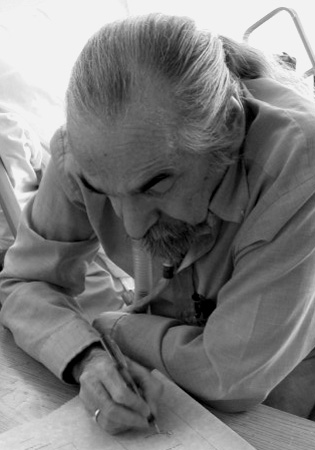Sunday, December 4, 2011
BLOODLINES: Serial Horror in Fiction #6: Oxrun Station by Charles L. Grant
Charles L. Grant: 1942-2006
by Bill Lindblad
I mentioned Oxrun Station in the last column, so it only seems right to give it some time this month.
This has been described by many as Charlie Grant's horror series. That's incorrect. Grant loved to connect his works, and he had a variety of series. He edited four: the Shadows anthologies of quiet horror; the 1980s paperback original set (Horrors, Terrors, Fears, Nightmares); a pair of Midnight books and the first horror shared-world anthologies of Greystone Bay. He connected some of his horror stories to his post-apocalyptic Parric series of science fiction novels and connected others to his Lionel Fenn humor series of Kent Montana. He set a number of his early horror stories on Hawthorne Street and others in the quiet town of Oxrun Station, to the point that his Arkham House collection had large sections for each setting.
But Oxrun is the one that put him on everyone's radar. He used the setting for eight novels (The Hour of the Oxrun Dead, The Sound of Midnight, The Last Call of Mourning, The Grave, The Bloodwind and the historical novels The Soft Whisper of the Dead, The Dark Cry of the Moon and The Long Night of the Grave). It also served as the locale for four novella collections (Nightmare Seasons, The Orchard, Dialing the Wind and The Black Carousel) and for other short fiction. Many of the works were nominated for World Fantasy and Bram Stoker awards, and some won him statuettes for his mantle.
By placing all of these stories within the same small town, he forced himself to use characters repeatedly, often expanding secondary characters in one story to protagonists in another. He added to the sense of continuity by including glimpses into the events before or after other works; a main character from an earlier novel evokes sympathy from another secondary character because of the family member she lost... the family member who was revealed at the end of the book to be a killer. The reader of the earlier book knows that in the end, she managed to drown the murderer and make it look like an accidental death in the tub. The person who did not read the earlier book is merely shown more of a town whose tertiary characters have a depth unusual to contemporary storytelling.
Sympathetic protagonists live and die, succeed and fail in the stories of Oxrun Station. The stories are told with a prose style leaning heavily toward the poetic, and Grant used that style to draw the reader into his stories. But the star of Oxrun was not his distinctive descriptive flair but rather the Station itself.
Other authors recognized this. A collection, Horror at Halloween, featured not only Grant but three other authors creating a mosaic novel for young adults set in Oxrun. Kim Newman gave readers a final and beautiful glimpse of the station in the staggeringly expensive Grant tribute collection, Quietly Now. The Station has been mentioned in tales by contemporaries and juniors to Grant, showing a longevity and appreciation for his creation.
Centipede Press recently reissued the first two novels in the series in beautiful hardcover editions limited to 100 copies each. They deserve to sell through quickly, because these books should be mandatory reading on how to properly construct a literary town. It is the luck of the horror community that genre to construct it.
--Bill Lindblad
(NOTE FROM EDITOR: As a writer of dark fiction, and a longtime fan of Mr. Grant's particular style of "quiet horror", I encourage anyone who wishes to become a better writer, or even someone who wants to read some of the best horror fiction published in the 80s and 90s, to please find Charles L. Grant's books, get them, read them and learn. Modern horror fiction needs to remember this man who helped in so many unapplauded ways to make the horror genre what it is today. It is a shame that he is now nearly forgotten by today's modern horror reader. But as modern horror writers, we cannot allow this man's contributions go unrecognized in the genre we all love so much. It is our duty to continue his work in creating horror that frightens on psychological and emotional levels, and leave one disturbed long after the last page has been turned. To do otherwise is far from fulfilling the first duty of great horror fiction. And to allow this man's works to be lost in such a short time is nothing short of a crime against the entire community of horror writers and fans.
--Nickolas Cook, Editor-In-Chief)




